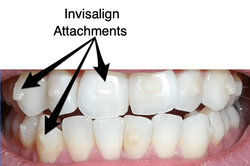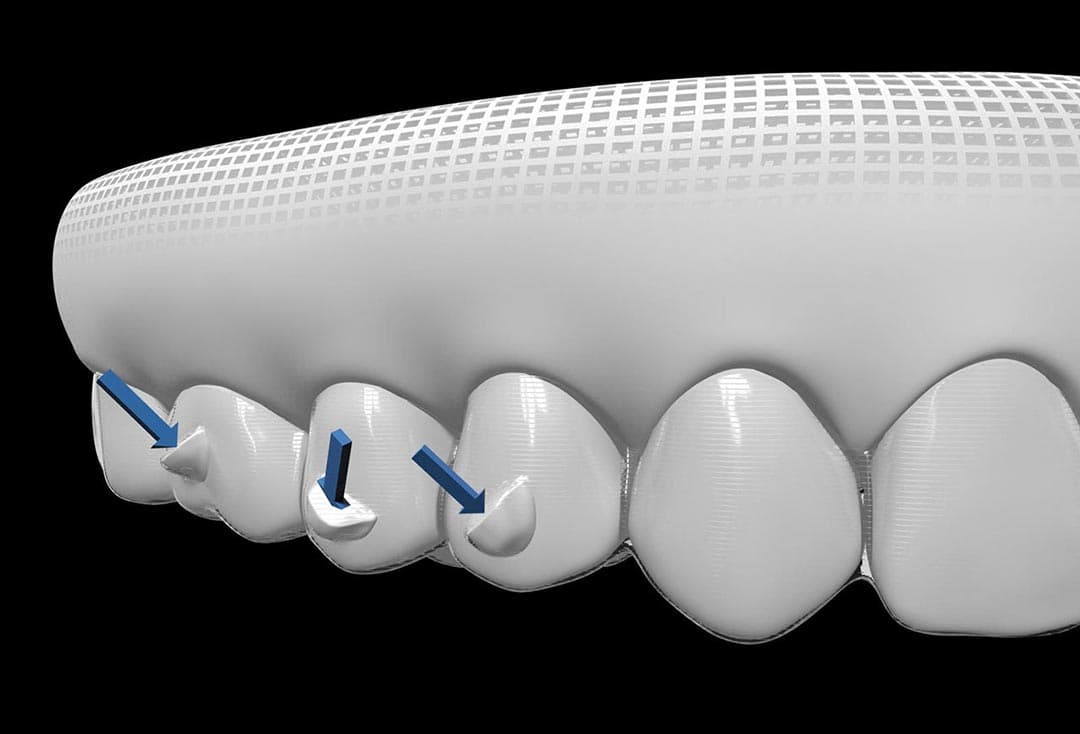Top Factors to Choose Invisalign Over Other Orthodontic Treatments
Top Factors to Choose Invisalign Over Other Orthodontic Treatments
Blog Article
Invisalign vs. Standard Braces: Which Alternative Is Right for You?
When taking into consideration orthodontic therapy, the selection in between Invisalign and typical braces provides several essential aspects that warrant mindful analysis. Invisalign supplies a discreet choice with removable aligners, while standard braces provide a much more visible yet efficient service for extreme misalignment. Each option includes distinct benefits and downsides associated with appearances, convenience, therapy duration, and expense. Understanding these subtleties is crucial for making an educated decision that lines up with your individual choices and lifestyle. The concern stays: which choice will ideal satisfy your orthodontic needs and expectations?
Introduction of Therapy Choices

On the other hand, traditional dental braces include steel braces and cords that are adhered to the teeth. This technique uses constant pressure over time to achieve positioning. While effective for complex orthodontic issues, traditional braces require regular gos to for changes and can posture difficulties in maintaining dental health due to the trouble of cleaning around brackets and cables.
Both alternatives have their merits, and the option often depends upon certain dental problems, way of life preferences, and client compliance. Ultimately, consulting an orthodontic professional is essential for identifying one of the most ideal treatment plan tailored to specific needs. Recognizing the nuances of each alternative can substantially influence the total success of orthodontic therapy.
Aesthetic Considerations
A considerable factor affecting the option between Invisalign and traditional braces is the aesthetic appeal each treatment supplies. Invisalign aligners are crafted from clear plastic, making them virtually unseen when worn.
On the other hand, typical dental braces contain metal brackets and cords, which can be extra obvious. While advancements in orthodontic modern technology have brought about the growth of smaller brackets and tinted elastics, standard dental braces still keep an even more conspicuous profile. For some people, the presence of dental braces might discourage them from looking for required treatment.
Inevitably, the choice between Invisalign and traditional braces might depend upon individual preferences regarding aesthetic appeals. Individuals that prioritize discernment typically favor Invisalign, while those who are less concerned concerning exposure might opt for typical dental braces. Recognizing the visual effects of each choice is critical for making a notified choice that aligns with one's way of living and choices.
Convenience and Convenience

In terms of comfort, Invisalign aligners are detachable, making it possible for patients to appreciate their favorite foods without limitation and preserve optimum dental health. Brushing and flossing are simplified, as the aligners can be taken out during these regimens, whereas typical braces call for careful navigating around wires and brackets.
In contrast, typical braces demand routine modifications, making them less hassle-free for those with hectic schedules. On the whole, the comfort and ease of Invisalign make it an attractive selection for lots of individuals looking for orthodontic treatment.
Therapy Period and Efficiency
While both Invisalign recommended you read and conventional dental braces work in dealing with dental imbalances, the duration of treatment can differ significantly between both options. Usually, Invisalign therapy can take anywhere from 12 to 18 months, relying on the complexity of the instance. The clear aligners work by slowly changing teeth into their preferred positions, and routine follow-ups with an orthodontist aid make certain progression stays on the right track.
On the other hand, standard dental braces typically call for a longer dedication, usually ranging from 18 months to three years. This is because of their set nature and making use of wires and brackets, which can be a lot more effective for intricate cases and severe imbalances (Invisalign). The therapy performance of traditional braces is well-documented, as they permit accurate modifications and higher control over tooth activity
Ultimately, the choice in between Invisalign and traditional braces might rest on both the anticipated therapy duration and the details dental problems handy. Consulting with an orthodontist is crucial, as they can provide customized referrals based upon private requirements, guaranteeing the selected technique straightens with wanted timeframes and results.
Cost Contrast and Insurance Alternatives
Price plays a significant duty in the decision-making procedure for individuals thinking about orthodontic therapy, whether going with Invisalign or standard braces. Usually, the cost of Invisalign arrays from $3,000 to $8,000, while published here traditional dental braces generally set you back between $2,000 and $6,000. Variables affecting these expenses consist of the intricacy of the situation, the duration of therapy, and geographical place.
Many dental insurance policy plans provide partial insurance coverage for orthodontic therapies, but the specifics can differ extensively. Generally, standard dental braces may be more frequently covered by insurance coverage strategies contrasted to Invisalign, which some insurance providers classify as a cosmetic procedure.
In addition, numerous orthodontic practices provide versatile layaway plan, making both therapy alternatives much more obtainable. Clients must ask about prospective financing alternatives and discounts for upfront payments. Reviewing the total expense, consisting of insurance coverage advantages and settlement strategies, is crucial for making a notified decision that aligns with both aesthetic choices and budget plan considerations.

Verdict
In recap, the selection between Invisalign and traditional dental braces hinges on multiple aspects, including aesthetic choices, comfort, therapy duration, and price. Invisalign uses a discreet, detachable option that assists in oral health and dietary versatility, while traditional dental braces might be preferable for complex oral issues and usually come at a reduced rate point. Eventually, appointment with an orthodontist is important to evaluate individual scenarios and determine the most proper treatment option for achieving visit here ideal oral alignment.
When thinking about orthodontic therapy, the choice between Invisalign and traditional braces provides numerous vital factors that merit cautious assessment.Contrasting Invisalign and typical braces reveals unique treatment choices for orthodontic correction.While both Invisalign and typical braces are effective in fixing dental imbalances, the period of treatment can vary substantially between the 2 alternatives.Cost plays a significant function in the decision-making procedure for people taking into consideration orthodontic therapy, whether opting for Invisalign or conventional dental braces.In recap, the selection in between Invisalign and standard braces hinges on multiple elements, consisting of visual choices, convenience, therapy duration, and expense.
Report this page